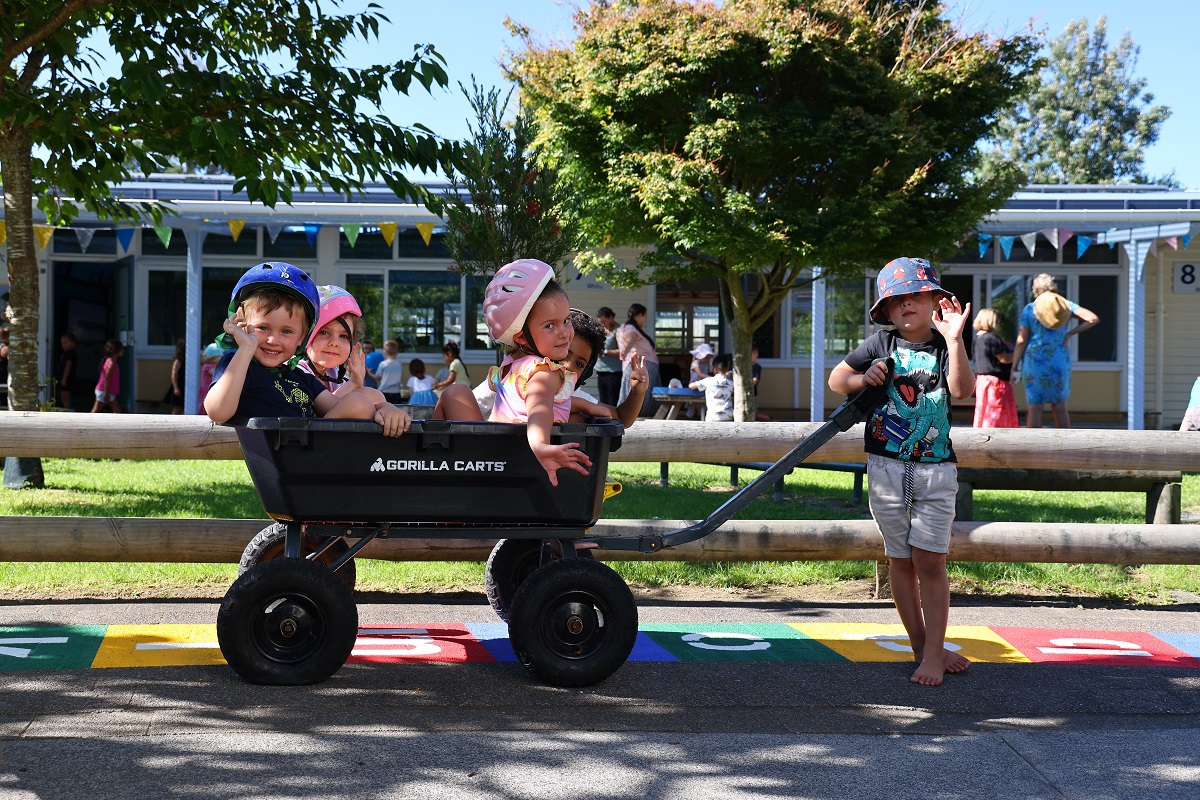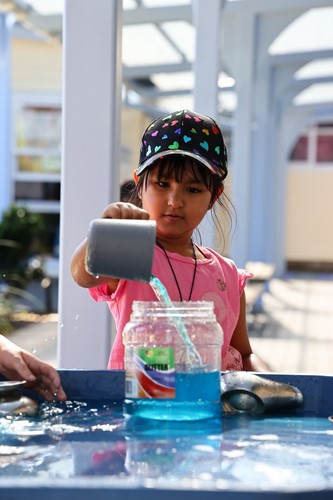How movement and play can unlock learning progress
How movement and play can unlock learning progress
Otonga Primary School Te Kura o Tihiōtonga in Rotorua is bringing learning to life through movement and supporting tamariki to develop a love of physical activity in the process.

Over the past four years, Otonga Primary School has worked with the Healthy Active Learning team at Sport Bay of Plenty to enhance the learning of students through the development of a student-centred physical activity environment.
Movement is now integrated across learning areas, fun is prioritised in physical education, and ākonga have many opportunities to learn through play.
“We learn how to build stuff instead of just sitting in class,” says Year 3 student Kanoa.
During break time ākonga scoot, skate, and climb trees, build see-saws with loose parts from the multiple Magic Play Boxes around school grounds and pull each other around on plastic carts. Meanwhile kaiako observe and identify opportunities to enhance learning in the classroom.
“If there is a child that really loves football and that is their passion, how can you explore that passion within the learning? Can you write about football? Can you read about football? Can you see how far you can kick the football and measure the kick?” says principal Gareth Cunliffe.
“We are still teaching children structured literacy and maths, but we are connecting it with what their urges are by providing invitations and provocations through play. It’s about linking into what they are already doing and then making it more complex.”
Gareth, previously a professional clown (a red nose still lives in his office drawer), a father of two, and local futsal coach, has seen first-hand the positive impact that quality physical activity and play experiences can have on the cognitive, social, and mental development of young people.
Movement and cognitive function
As outlined in the Value of Sport Report published by Sport NZ, the developing brain is particularly responsive to exercise, and doing more physical activity during childhood can have positive impacts on cognitive function.
There is also a positive association between physical activity and higher test scores, improved reading and maths skills, and better attendance and behaviour at school.
“Building things, making things, playing with sand, playing with water, running, jumping, throwing, and climbing. There is a huge amount of evidence that says that physical activity like that is conducive to learning,” says Gareth.
That’s why, as well as personalising learning based on students’ interests, ākonga at Otonga are learning science, maths and literacy through movement, often outdoors.
There’s a class that learned place values through games of ‘Rob the Nest’ and another that integrated a physical education unit focused on improving throwing skills with a science unit about flight.
Strategic planning
The school’s Healthy Active Learning advisor, Kimiora Insley, has led PLD sessions for kaiako, and helped the school embed physical activity into their strategic planning and access funding through Tū Manawa Active Aotearoa.
Kimiora says schools play a key role in encouraging young people to enjoy physical activity.
 |
| A science lesson encourages curiosity and play |
“Our tamariki sit for too long now. They are not moving so much anymore and many don’t have the confidence and self-esteem to get involved in formal sport or physical activity. The more we can get them moving every day and being active with others, the more confidence they have.”
Kimiora also recognises that maths and literacy are priorities for teachers and she has seen how learning through movement can help, as well as develop the physical literacy skills of tamariki.
She says it also encourages teachers who may not feel “sporty enough”, or feel that they have the time, to get moving with their students through simple activities.
“Have you got time to get outside and continue with what you are doing in the classroom? If it is in a worksheet, you can cut it up and turn it into a movement activity.”
Making it fun
Gareth is equally committed to ensuring all ākonga can be active. He says that tamariki naturally want to move and it’s up to schools and those adults in their lives to ensure their environment allows them to do so in a mana-enhancing way.
He is a big advocate for Balance Is Better, an evidence-based philosophy which reinforces that early specialisation and an over-emphasis on competition in sport for young people increases the chance of them dropping out in their teenage years.
Fun is now the primary focus of school sport events at Otonga. This is exemplified by the school’s new colour run – an evolution of its historical cross-country event.
“I have never seen so many children running around so much,” Gareth says.
“Healthy competition is good, and we have these events too, but when it becomes ‘win at all costs’ it is detrimental. So, what is the key? Fun.”
He also has words of advice for other schools wanting to integrate movement across the curriculum.
“You have got to be brave. When you are moving from a traditional model of education where children are just spoken to, to asking them for their voice, you’re going to have a bit of push back – especially from those adults who were taught like that,” he says.
“There is a misconception that we chuck down a whole lot of toys and ākonga just play. Actually, it is as much teacher directed as it is child centred. We are teaching the curriculum in a way that engages.”
This story was first published in the Education Gazette, 22 February 2024.
Find out about resources, funding and support to help schools and kura ensure all students have access to quality physical activity experiences and enjoy being active in ways that suit them.
